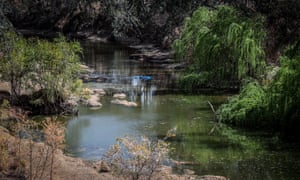
Grassroots appeal in the European Court of Justice to protect endangered wolves in Finland.Sari Kantinkoski | 16th January 2020

Wolves and other large carnivores were near extinction or extinct in several countries in Europe by the early 1900s.
In Finland, wolves continued to be freely hunted until 1973 and only few individuals were roaming in boreal forests. When Finland became a member state of the European Union in 1995, wolves became a protected species in Finland.
Poaching is considered to be as one of the main reasons why wolves have not managed to reach favorable conservation status in Finland in twenty years of their recovery.
Prohibition
The Habitats Directive of the European Union includes wolves as a protected species. The Directive protects wolves at different levels in different parts of Finland.
Outside of the designated reindeer husbandry area, wolves are strictly protected, meaning that all hunting, disturbing and harming of these animals is prohibited.
Finland was sued by the Commission of the European Union in the European Court of Justice (CJEU) in 2005 because it had not fulfilled its obligations of wolf conservation.
The Court decided that “by authorizing wolf hunting on a preventive basis, without it being established that the hunting is such as to prevent serious damage within the meaning of Article 16(1)(b) of Council Directive on the conservation of natural habitats and of wild fauna and flora, Finland has failed to fulfil its obligations under Articles 12(1) and 16(1)(b) of that directive.”
In 2005, Finland also released the first management plan for wolves. The plan introduced several preventive methods and measures to protect the Finnish wolf population of about 200 individuals, but the implementation of those measures was handled very poorly.
Management
Before the decision of the CJEU, the Ministry of Agriculture and Forestry launched a so-called management hunt of wolves in 2006 and the next year, the population collapsed from 220-250 individuals to 200 wolves and continued to deteriorate to 120-135 wolves in 2013.
There was no action taken to prevent poaching, damage to livestock or dogs, the spreading of misinformation or the increasing antagonism towards wolves during 2007-2014.
The conflict worsened in 2013, when 12 hunters at Perho, Ostrobothnia were convicted of illegal hunting of wolves. One of the convicted was a member of a National Wildlife Council in Finland. The Ministry of Agriculture and Forestry began to update the management plan for wolves in 2014.
The new update of the management plan was supposed to concentrate on the preventive methods to support the recovery of the wolf population in Finland. In workshops, several stakeholders including representatives of hunting, agriculture, and conservation interest groups agreed on electric fencing, compensatory payments, territorial collaborative management and the importance of the role of accurate information, among other things.
But instead of going forward with what was agreed upon in the workshops, the Ministry decided to launch a management hunt of wolves as a two-year experiment.
WorkAs a result of the derogation procedures of the Wildlife Agency in Eastern Finland, we established NGO Tapiola in November 2014, to intervene by legal action and to question the decision making regarding the wrongful interpretations of the Habitats Directive.
Soon we realized that our new organization had its hands full of work. We gave a statement to the Ministry concerning the new management plan and the hunting quota of 29 wolves, which had unexpectedly appeared along with the plan.
Simultaneously the Wildlife Agency released the information regarding the application process for permissions. The last day for giving statements concerning the quota was on 22 January 2015, and all the permissions for 24 wolves were granted on 23 January 2015.
With only a small budget and without any assistance from lawyers, we appealed all the permissions. Two Administrative Courts prohibited the implementation of the licenses for five wolves. We argued that hunting violated the Habitats Directive Article 16 (1)(e) derogation preconditions in allowing the hunt to take place during the breeding season.
Also, the Directives requirements- “selective basis”, “limited extent” and “under strictly supervised conditions” weren’t met during the hunt. 17 wolves were killed in the management hunt.
Appeal
The appeal process can take several months, sometimes even years. As a result of the “first round”, all the courts, besides the Administrative court of Hämeenlinna (Northern Tavastia), claimed that legally Tapiola was not an authorized local NGO with a right to appeal. But when also the Court of Hämeenlinna rejected our appeal, none of them were successful.
Gathering information and scientific data was an essential part of our commitment to prove every single of the claims we made.
Therefore, we collected data of population development, mortality, biology, scientific studies and research, legislation, legal praxis, preventive methods, police orders, etc. At the end of 2015, we changed our organizational structure into an association with six district organizations under one national umbrella organization.
The management hunt of wolves continued as planned in January 2016, with a quota of 46 wolves. Eventually 44 of them were killed.
Our district organizations appealed, and this time all the Administrative courts rejected either our appeals or our right to appeal. The Administrative Court of Eastern Finland concluded that we had no right to appeal, even though, there was a contradictory decision from a year earlier given to another local organization.
We decided to take our case to the Supreme Administrative Court (SAC) of Finland. The SAC took our case and confirmed our right to appeal. As per our suggestion, the court also decided to ask for a preliminary ruling from European Union Court of Justice in November 2017.
Last resort
The process actually started when the CJEU asked for a written observation in March 2018. In the end the observation was a 20-page long document, with 30 attachments and 55 references. After the written observations, the Court invited us to an oral hearing which was held in Luxembourg in January 2019.
The Advocate General gave his opinion in May 2019 which gave reason for the Ministry to plan the management hunting again. The ministry had launched earlier the same year the third version of the management plan of wolves.
Hunting was once again on the table, until the ruling of the EUCJEU came out on October 10th2019. The CJEU’s decision respected the Habitats Directive and its spirit and purpose, which is to protect species. It confirmed that derogation is allowed only in rare cases, when there is no other satisfactory alternative, and there is scientifically valid evidence that derogation is an effective solution to the problem.
In other words, killing is always the last resort, while other alternatives are primary. The court also highlighted the precautionary principle and noted that recommendations in permissions were not legally binding, thus allowing the killing of breeding and collared individuals.
The Court also underlined, that reaching a favorable conservation status requires a long-term observation and highlighted the need for biological evidence. In larger context, the management hunting of wolves did not follow the Directive’s requirements for when exceptions from strict protection was permissible.
ProtectionsThe ruling of the CJEU concerns all species that are strictly protected under the Habitats Directive Annex IV and all the member states of the European Union.
Why did we do this? We did it because we had to. The administration gave us no choice, since there was no genuine effort to listen to the environmental organizations and no honest intention to fulfil the Directive’s obligations. We succeeded only because we were right. We had a case and the means to prove it. The CJEU was not interested in who we were, but what we had to say.
The ruling of the CJEU authoritatively interprets the Habitats Directive and must be followed in every decision concerning strictly protected species in lawmaking, administrative decision making, as well as by courts.
The “Fellowship of The Ruling” must go on, we have still work to do. We continue to monitor that endangered species will have the full protection provided by the Habitats Directive in Finland.
At the moment, the Ministry of Agriculture and Forestry has set up a committee to find solutions on how to implement managemental hunting despite the ruling and without going into infringement proceedings with the EU Commission.
This Author
Sari Kantinkoski is a founding member of ANC Tapiola. She is a Bachelor of Environmental Science and her main subject is the environmental change and policy. Her current occupation is a nature surveyor, specialized in mammals and dragonflies. She lives on the West Coast of Finland and has a wolf pack “of her own” living nearby, which she has monitored for several years. Tapiola was established in 2014. Priorities of the organization are habitats, endangered species and large carnivore.
Image: Juha Sjöholm, wolves at Ähtäri Zoo.
Help us keep The Ecologist working for the planet
The Ecologist website is a free service, published by The Resurgence Trust, a UK-based educational charity. We work hard - with a small budget and tiny editorial team - to bring you the wide-ranging, independent journalism we know you value and enjoy, but we need your help. Please make a donation to support The Ecologist platform. Thank you!



























 Karl Marx, date unknown. Photo from Bettmann/Getty Images.
Karl Marx, date unknown. Photo from Bettmann/Getty Images.


